With the first three months of the year now gone, it’s time for a review of my birding efforts so far this year. At the time of writing, my British year list stands at a modest but satisfactory 139, while my European list is on 173, thanks to a visit to southern Spain in February. The next couple of months will of course see a boost to my British list, as summer migrants flood into England, while forthcoming trips to Cyprus, Greece and northern Spain will also turbocharge the European list.
Pinkfooted Geese in North Norfolk – winter visitors from Iceland
My British list is, in fact, merely an East Anglian list, as I haven’t (so far) ventured out of the counties of Suffolk, Norfolk and Essex. Nor have I chased particular birds, either: almost all the birds I have seen have been encountered during a normal day’s birding, not a targeted twitch for a particular species. I have managed to see the great majority of the wintering birds I expect, but there have been a few major misses. I haven’t, for example, seen a Bewick’s Swan, though I have encountered a number of Whoopers, their bigger cousins. My goose count stands at a satisfactory eight species, including the bonus of a Red-breasted, but there have been few records of Bean Geese in East Anglia this winter, so I haven’t seen any.
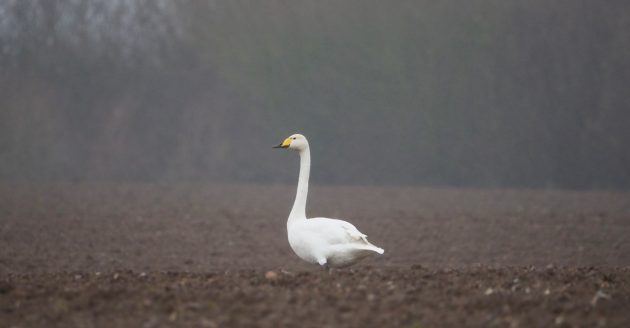
A lone Whooper Swan on a grey January day in Norfolk
As for the ducks – I’m now up to 15 species. I’ve failed to find Velvet Scoter, while the mildness of the winter (no snow and not much frost) meant that few Smew reached England, so I haven’t seen one. Short-stopping means that they stay on the continent, but hard weather there will push them across the North Sea to England. We have had a winter with no snow, and few frosts, so no Smew.
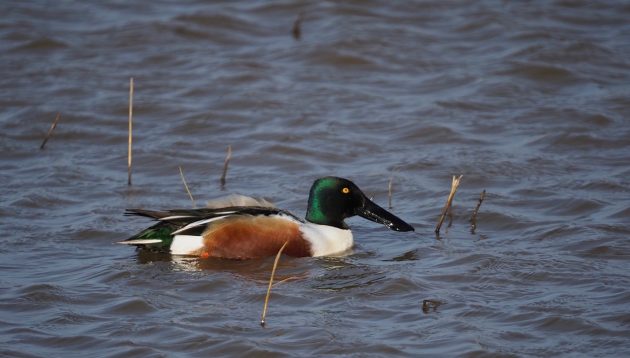
Drake Shoveler – one of 15 species of ducks seen so far this year
A drake Pintail was my 100th species of the year on 22 January, while my bonus ducks were five Lesser Scaups – three adult drakes and two females – on Abberton reservoir in Essex. I really enjoyed seeing these birds, as though I have watched them in their native North America, where they are abundant, that was a long time ago. They are rarities in Britain, with the first individual only recorded as recently as 1987. The birds I saw were mixed in with a flock of Tufted Ducks, their European counterparts, for they are a similar size and have very similar habits and behaviour. Frustratingly, there were just too distant to photograph.
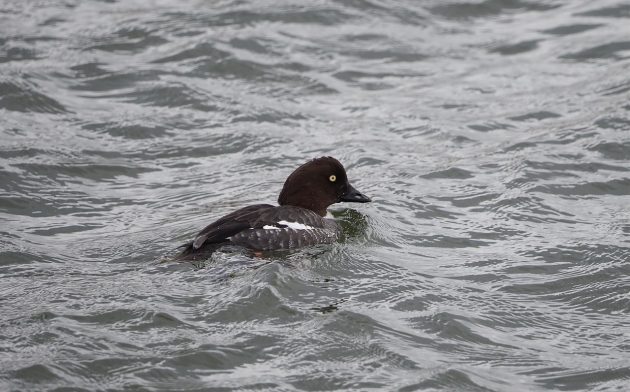
Goldeneye have become scarce in recent winters
Goldeneye used to be widespread winter visitors to this part of the world, but they have become much scarcer in recent years, again as a result of short stopping. I eventually saw my first of the year on Abberton on the same day that I saw the Scaup. With their exuberant displays, drake Goldeneye are always entertaining birds to watch.
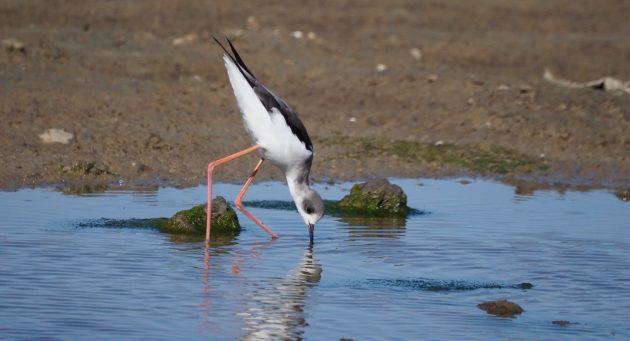
A Black-winged Stilt in Spain in February
My wader list (or what you would call shorebirds in North America) is up to 25, a satisfactory total, but one that doesn’t include any surprises. I haven’t connected with an over-wintering Greenshank or Spotted Redshank, both species I am sure to see in the next few weeks, while in Spain my only notable additions were Stone Curlew, Black-winged Stilt, Kentish Plover and Little Stint, the last three all on the estuary of the Barbate. Wader watching in spring is always exciting, as so many of these birds are transformed when they acquire their breeding finery. A winter Grey Plover is an unremarkable bird, but in spring plumage, with deep black belly and silver-spangled back, it is a different proposition entirely.
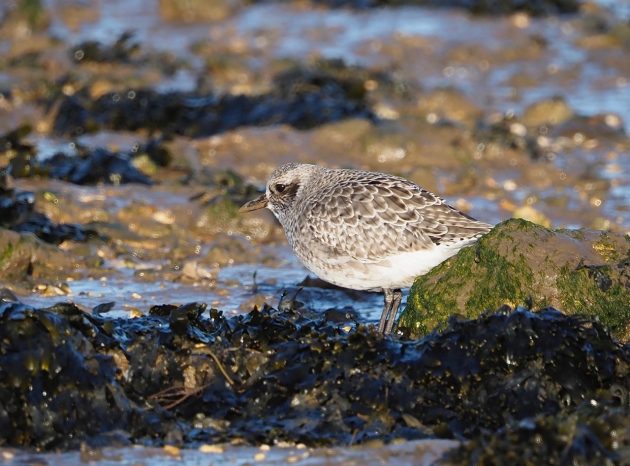
Grey plover in winter – it’s a different bird in its summer finery
One species I was pleased to find was Purple Sandpiper. Though this bird winters commonly on the rocky northern coasts of Britain, it’s not easy to find in East Anglia, with its generally sandy coast. I found my birds near Ness Point on the Suffolk coast, the most easterly point in the British Isles.
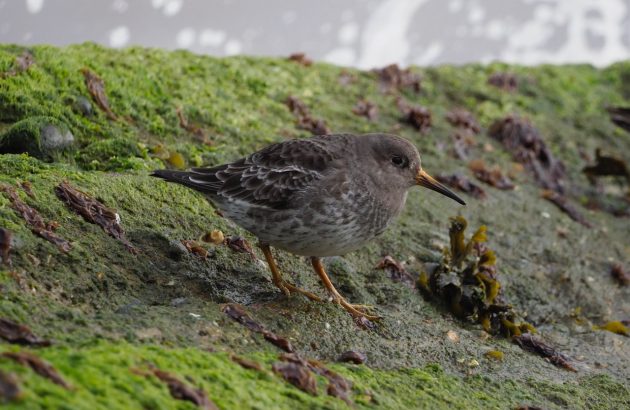
Purple Sandpipers like rocky seashores – we don’t have many in East Anglia
A bird that many British birdwatchers struggle to see is the Woodcock, the wader of the woods. I’ve seen quite a few, including no fewer than 14 flushed, one by one, from a small Suffolk wood in late January. The Woodcock were disturbed by beaters driving Pheasants for a game shoot. Though the Woodcock is a legal quarry species, many people no longer shoot them, and not one was fired at on this day. I suspect that almost every Suffolk wood holds a Woodcock (or even several Woodcock) in mid winter, but because they rarely fly during the day unless disturbed, they go unseen. A few breed locally, and in March I went out twice at dusk to watch for roding (displaying) males: I saw single birds on both occasions.
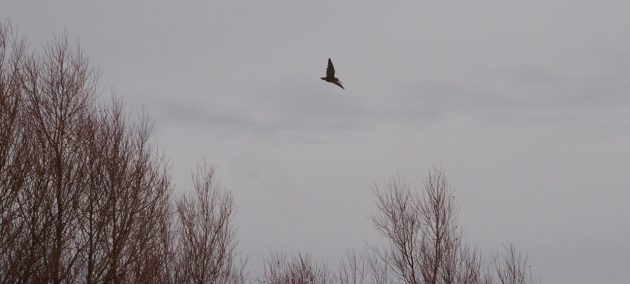
A typical view of a Woodcock – high over the woods
The heath where I saw the roding Woodcock is a regular site for Long-eared Owls. They bred here in both 2021 and 2022, though none were found last year. There was a chance I might find one when looking for the Woodcock, but I didn’t have any luck, and the only owl I recorded was a hooting Tawny.
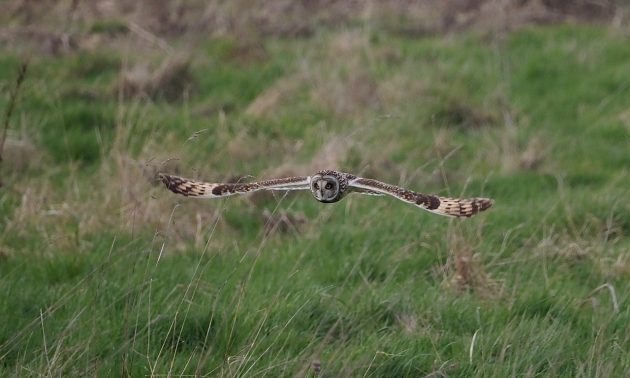
Always a good bird to see: a Short-eared Owl. This bird was in the Norfolk Broads
It has been a good winter for Short-eared Owls, but I failed to see any until the end of March, when I came across a single bird in the Norfolk Broads (above). This was a co-operative individual that spent some time hunting a field of rough grass, giving plenty of opportunities for photography.
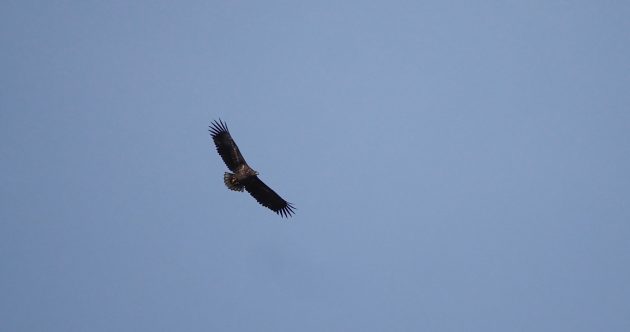
One of the wintering White-tailed Eagles, photographed in North Norfolk in March
The past winter has been notable locally for the appearance of two White-tailed Eagles, one a tagged young bird from Sussex (the first English-hatched bird for 200 years), the other another first-year bird that had fledged in Holland. Though they came close to home, and were even seen by non-birdwatching friends, I failed to see them. I did, however, enjoy two unexpected encounters (most probably with the Dutch bird) on the Norfolk coast in February and March. Seeing eagles is always exciting, and I much enjoyed these two encounters.
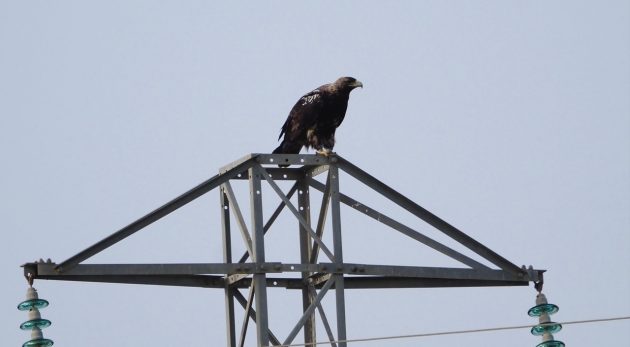
An adult Spanish Imperial Eagle, perched on a roadside pylon
As for other birds of prey, I did see a female Pallid Harrier that wintered for the second year in a row in Norfolk, though the view was a distant one. I struggled to find a Hen Harrier, but finally saw a ring-tailed bird within a mile of home when walking my spaniel, a surprising sighting that I was quite delighted with. In Spain, my most notable raptor was a fine adult Spanish Imperial Eagle, sitting on a roadside pylon near the town of Medina-Sidonia. This is a good area to see these handsome eagles, though pylons hardly make the most photogenic of perches.
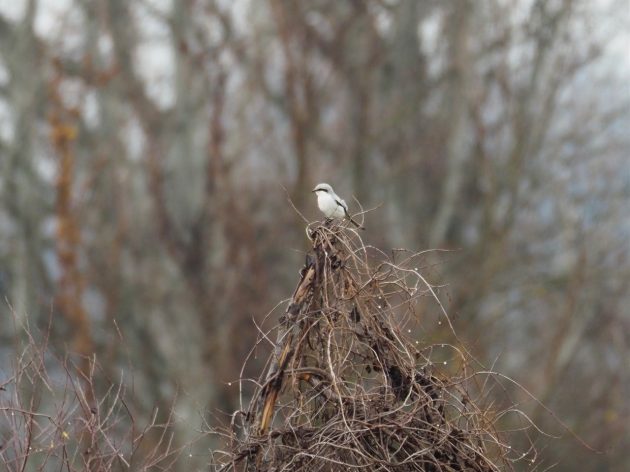
Great Grey Shrikes have become rare birds in East Anglia
In Spain I surprisingly failed to see a Southern Grey Shrike, once a common bird in rural Spain, but which has become scarce in recent years. Here in East Anglia Great Grey Shrikes used to be regular winter visitors, but they’ve become quite rare this century. Only one was reported locally in the Brecks this past winter, so I did make the effort to go and see it. It was a long walk to find it, on forest tracks, but was much enjoyed by Emma my spaniel who accompanied me. Once they’ve found an area they like, these shrikes become site-faithful, so they are relatively easy to find if you know where to look.
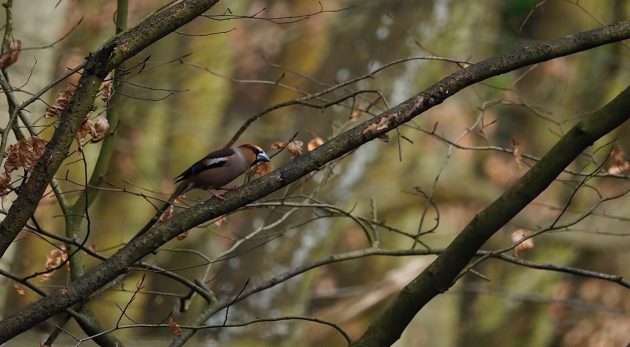
Hawfinches are much sought after by birdwatchers in the UK
On the near-continent Hawfinches can be quite common, but here in the UK they are rare birds, so are much sought after by birdwatchers. I’ve enjoyed three sightings this year: the first were very distant, sitting in a hornbeam tree; the second was a party of six birds that flew over my head, while the third was a co-operative individual that let me photograph it. Two years ago Hawfinches nested in a friend’s Breckland garden, but he hasn’t had any sightings yet this year.
Every year I look forward to the return of our summer breeding birds. There was a mass arrival of chiffchaffs on 14 March, and now they are everywhere, while I heard my first Blackcap locally on 23 March. Though I saw both Swallows and House Martins in Spain in February, I don’t expect to see them here until April. But it’s not until I hear my first Cuckoo (generally around 21 April) that I know that spring has really arrived. I can’t wait.
Source link
Facebook
Pinterest
Twitter
LinkedIn

